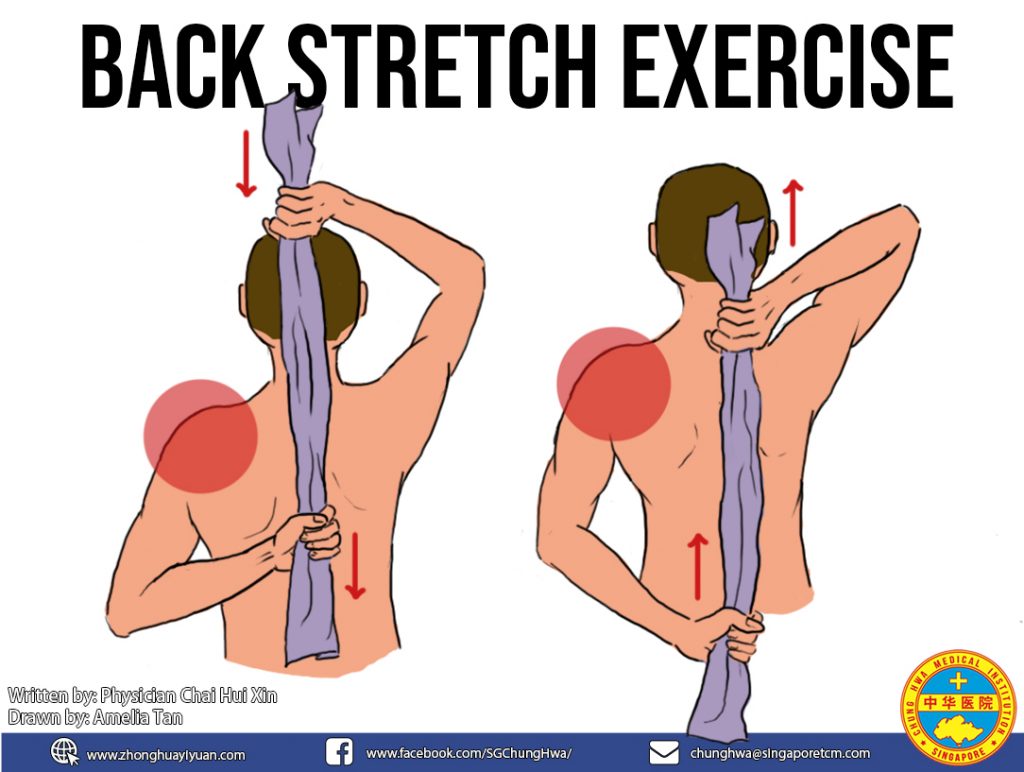Frozen Shoulder
‘Frozen shoulder’, formally known as Adhesive Capsulitis, is one of the most common disease seen during one’s middle to old age. It is also known as ‘Fifty-shoulder’ in TCM as its age of occurrence is normally at or around 50 years old.
‘Frozen shoulder’ is caused by a wide range of chronic aseptic inflammatory reactions between the joint capsule of the shoulder joint and the soft tissues around the shoulder joint, which causes extensive adhesion of the soft tissues, thereby hindering the movement of the shoulder joint. It usually starts with the limitation of shoulder joint abduction and external rotation activities, and gradually develops into widespread limitation of shoulder joint activities.
The course of the ‘frozen shoulders’ can be divided into three stages: pain period, freezing period, and thawing period.
- Early stage (pain period) – During the first stage pain is widespread around the shoulder joint. This pain could wake one up at night or hinder side sleeping positions. The range of shoulder movement is slightly restricted at this point.
- Mid-stage (frozen period) – Here, the pain experienced gradually reduce, however, the range of movement of the shoulder joint is also significantly reduced – simple actions such as combing of hair or putting on shirt cannot be performed or severely restricted.
- Late stage (thawing period) – At the later stage, the pain continues to subside, and the range of movement of the shoulder joint gradually increases.
“Frozen shoulder” is commonly attributed to a combination of ‘wind’, ‘coldness’, and ‘dampness’ pathogenic factors resulting in a stagnation of blood and ‘Qi’ from the TCM pathology point of view.
During shoulder joint ‘frozen period’, simple actions like raising of hand, combing of hair, or putting on your shirt could pose a difficulty and often involve a lot of pain, severely affecting the quality of life.
Other than seeking medical help as soon as possible, one can also perform the following exercises to promote the blood and ‘Qi’ circulation, thereby mitigating shoulder joint muscle adhesion, achieving a normal shoulder joint rotation.
Below introduces 2 simple shoulder exercises to ameliorate the effects of ‘frozen shoulder’:
1.‘Wall climbing’ exercise
Face a piece of wall and place hand (affected arm) against the wall. Slowly inch fingers up against the wall, try to raise arm as high up as possible. Hold the highest position for a few secs before slowly lowering the arm. Repeat action, each time try to raise arm a little higher than before.
2. Back stretch exercise
Prepare a small towel by rolling the towel length wise. Grab the ends of the towel, with the unaffected arm above head and the hand with frozen shoulder on the bottom, slowly raise the unaffected arm bringing the bottom arm up. Gradually resume to the starting position, repeat exercise. Perform exercise twice a day, each time repeat steps 5-10 times. Perform exercise at a comfortable intensity, slowly increasing the number of repetitions. Do take caution not to overwork muscles.

To keep ‘frozen shoulder’ at bay, one should make sure that the shoulder joints are kept warm (or away from any direct ‘wind’, ‘cold’, or ‘dampness’ pathogenic factors) and perform the above-mentioned exercises regularly to maintain the shoulder joint’s agility!
参考资料:
《中医骨伤科学》 “十二五” 中国中医药出版社
《推拿学》 “十一五” 中国中医药出版社
《肩关节周围炎的分期与分型证治》新中医 1990年12期 作者:余锡明
Post Views: 4,232